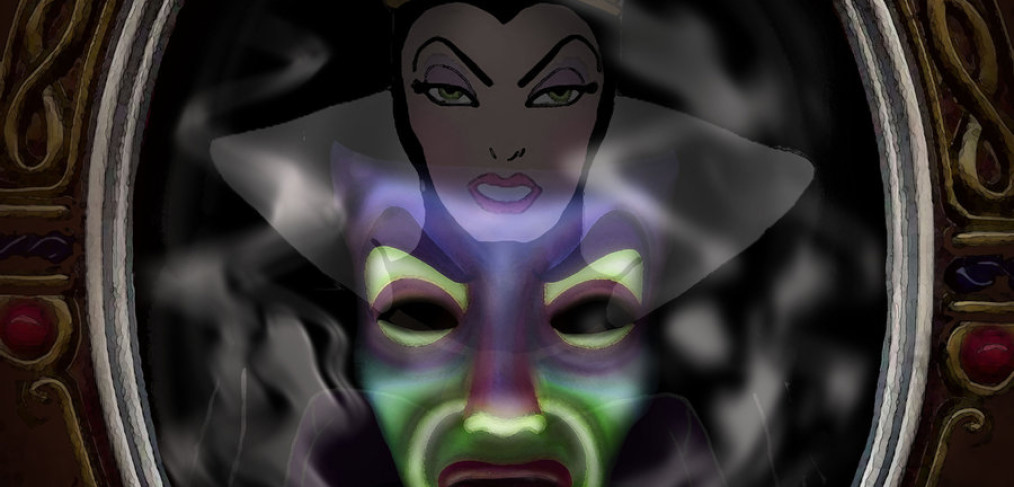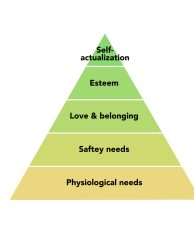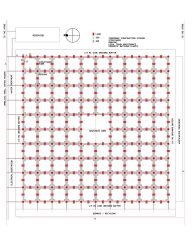
Mirror, mirror on the wall, who’s the fairest of them all?
Once upon a time, people used to buy products with the ultimate purpose to satisfy their individual and collective needs
. But how far have we left that ‘idyllic’ world to create one full of consumerism? To which extent do we use goods to define ourselves?
Picture: “Slave in the Magic Mirror“ by Lydia Burns
———————————————————————————————————————————————————————–
We define consumerism as “a social and economic order and ideology that encourages the acquisition of goods and services in ever-greater amounts.” We need things to survive, I am not going to deny that. We need food, water, clothes, a roof over our heads… But, do we require every single thing humans of the 21st century society acquire? To what extent have we let the economy and businesses drive our behaviours and actions so we purchase goods we actually do not need? A long time ago, in our parents or even grandparents’ decade, people would survive with the essential stuff and put secondary things aside. Probably, because there was not enough in the budget that would let the families afford ridiculous whims. I still remember my grandma telling me as a kid: “save every penny you can honey, you never know when you’ll need it”. Can you envision that nowadays?
Regardless of the economic situation, consumers will continue to buy. The money we get in our hands, the money we feel the rush to spend. Debt has been proved to be gradually increasing trough the past years. According to Bloomberg:
“Consumer indebtedness rose $127 billion to $11.28 trillion, the biggest increase since the first quarter of 2008, according to a quarterly report on household debt and credit released today by the Fed district bank. Mortgage balances climbed $56 billion, student loans increased $33 billion, auto loans were up $31 billion and credit-card debt rose by $4 billion. […] With non-housing debt consistently increasing and the factors pushing down mortgage balances waning, it appears that households have crossed a turning point in the deleveraging cycle.”
What is behind all this consumerism? We spend money we do not have, we buy products we do not need, and all this to impress people we do not like and to increase our own self-esteem level, the so-called retail therapy. The paper “Protecting the self through consumption: Status goods as affirmational commodities” (Sivanathan, N. & Pettit, N.C., 2010) showed that individuals whose self-worth was harmed sought affirmation in high-status goods:
“Individuals conspicuously consume to signal their wealth. […] The economic explanation – that people purchase conspicuous goods because they want to signal positive things about themselves to others – felt incomplete. We wanted to delve into what causes people to act out their urge to purchase conspicuous goods, and more importantly what causes that urge in the first place. Our research shows that part of the impetus behind these consumption decisions is the desire to repair self-threat.”
Here goes my tip: do yourself and your bank account a favor and DON’T GO SHOPPING WHEN YOU ARE DEPRESSED.
Source of the picture: Movie “Confessions of a shopaholic” (2009)
In a society where we are bombarded with advertising and messages suggesting on a daily basis that the good life and the happiness status quo can be found through the “goods life”, how could you not fall into the consumerism trap? How could we not get immerse into the spiral of consumerism to the extent of considering a pair of Jimmy Choo shoes or one car per family member are a human basic right?
Talking about consumerism-driven behaviors I think it is worth to mention consumerism in its perfect form: shopaholism. As all of us know from words such as alcoholism, the suffix -ism often implies “a condition, disease, or intoxication”. Congratulations world, we made it! Now we have an official word for all illness that involves addiction to shopping. First world problems. According to The Guardian:
“Experts believe 10 per cent of the population, and possibly 20 per cent of women, are manic, compulsive shoppers. Most shopaholics are seriously in debt, and the condition has led to family break-ups, depression, homelessness and even suicide.”
However, some critics have been made to this lifestyle. Thorstein Veblen’s observations of more than a century ago, though somewhat obvious, still ring true:
“Since the consumption of these more excellent goods is an evidence of wealth, it becomes honorific; and conversely, the failure to consume in due quantity and quality becomes a mark of inferiority and demerit.” The Theory of the Leisure Class: An Economic Study of Institutions (Thorstein Veblen, 1902)
“Our economy demands that we make consumption our way of life, that we convert the buying and use of goods into rituals, that we seek our spiritual satisfactions, our ego satisfactions, in consumption. The measure of social status, of social acceptance, of prestige, is now to be found in our consumptive patterns. The very meaning and significance of our lives today expressed in consumptive terms. The greater the pressures upon the individual to conform to safe and accepted social standards, the more does he tend to express his aspirations and his individuality in terms of what he wears, drives, eats- his home, his car, his pattern of food serving, his hobbies…. We require not only “forced draft” consumption, but “expensive” consumption as well. We need things consumed, burned up, worn out, replaced, and discarded at an ever increasing pace. We need to have people eat, drink, dress, ride, live, with ever more complicated and, therefore, constantly more expensive consumption.” The Poverty of Philosophy (Karl Marx, 1847)
A waking-up from the society and resilience against pure consumerism has been already reflected in several conceptual artworks from many several artists:
“Société 2” by David Terrazzano
“Consumerism” by Roberlan Borges
“Jesus Christ with Shopping Bags” by Banksy
“I shop therefore I am” by Barbara Kruger
Not all anti-consumerists oppose consumption in itself, but they argue against increasing the consumption of resources beyond what is environmentally sustainable. If you don’t do it for your wallet, at least do it your your planet.
Author: Jimena Garcia Mateo










